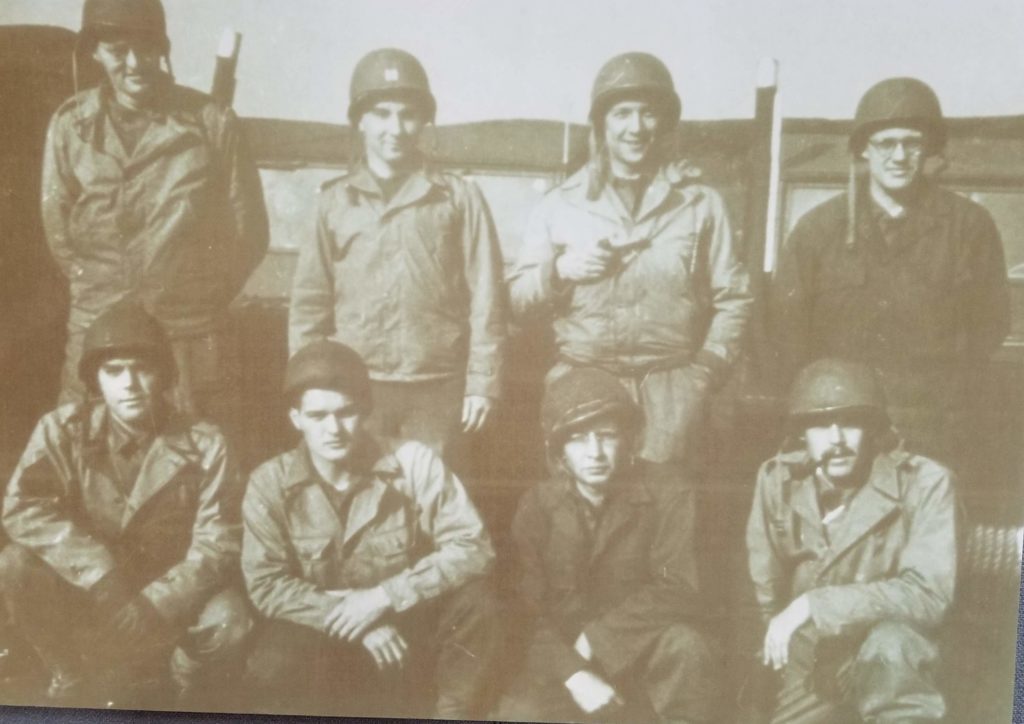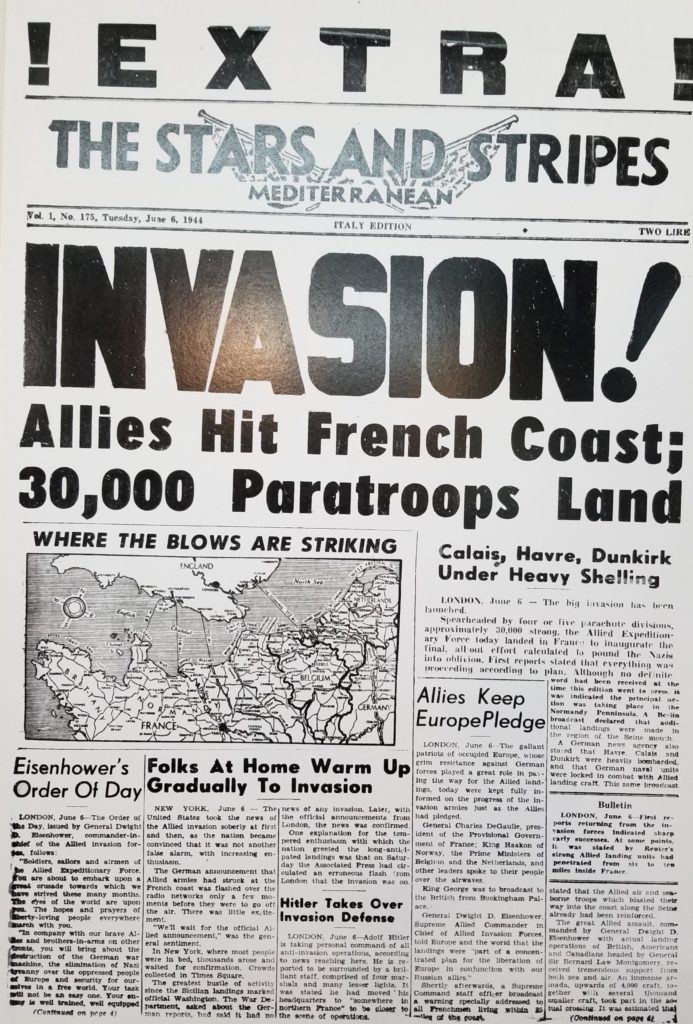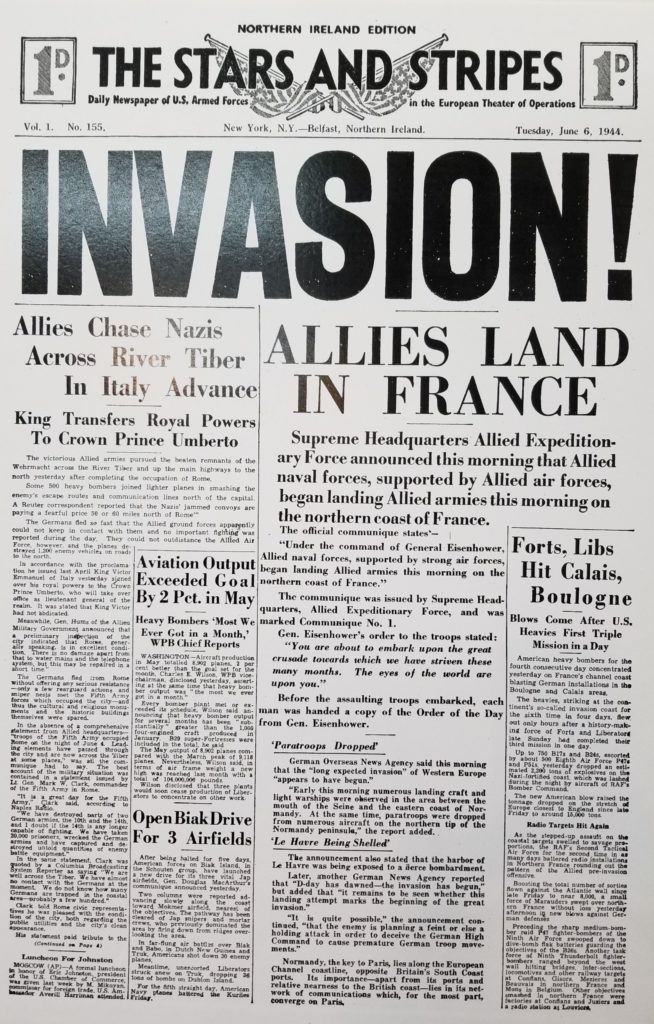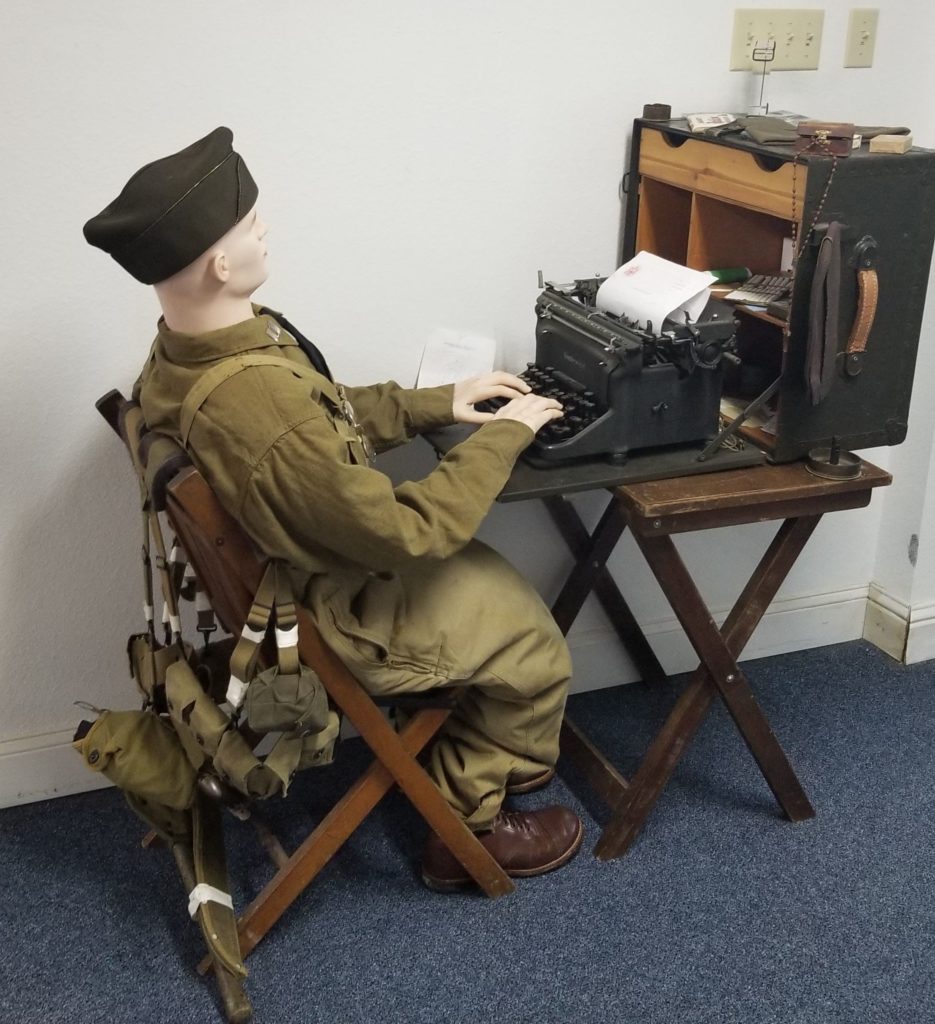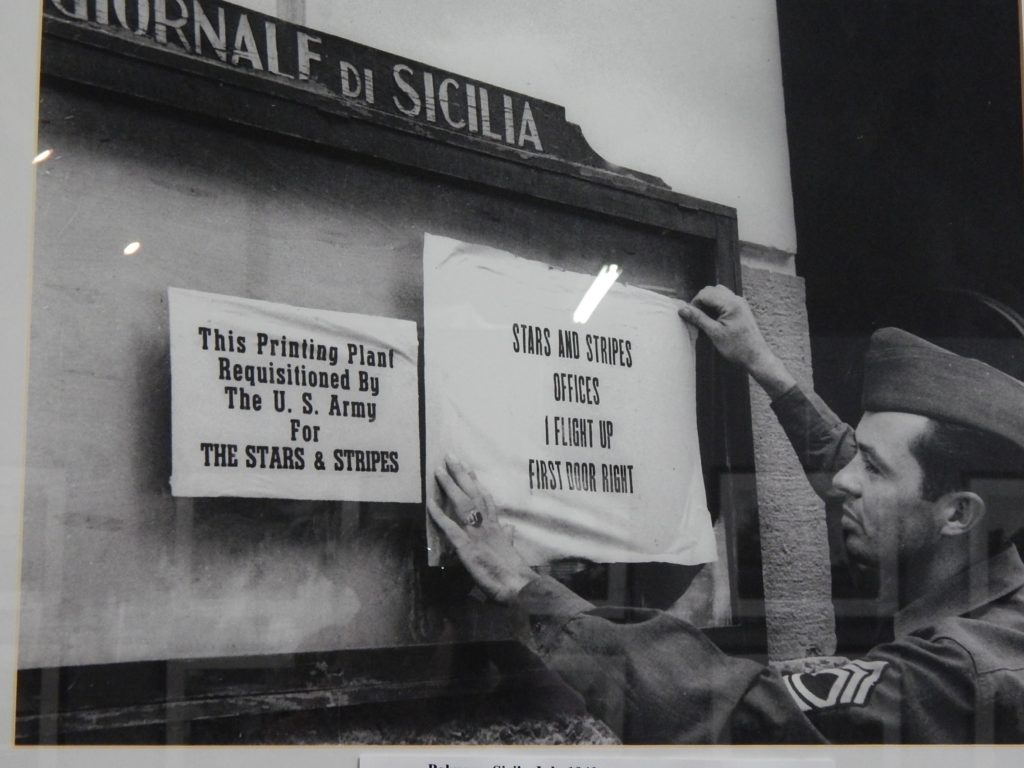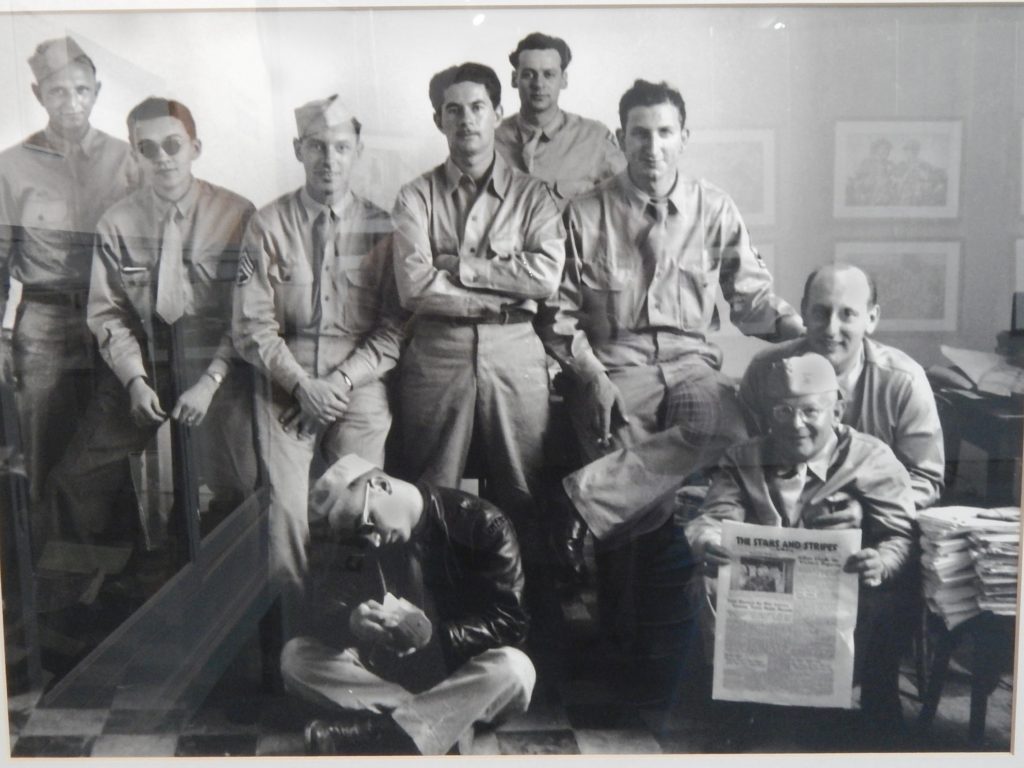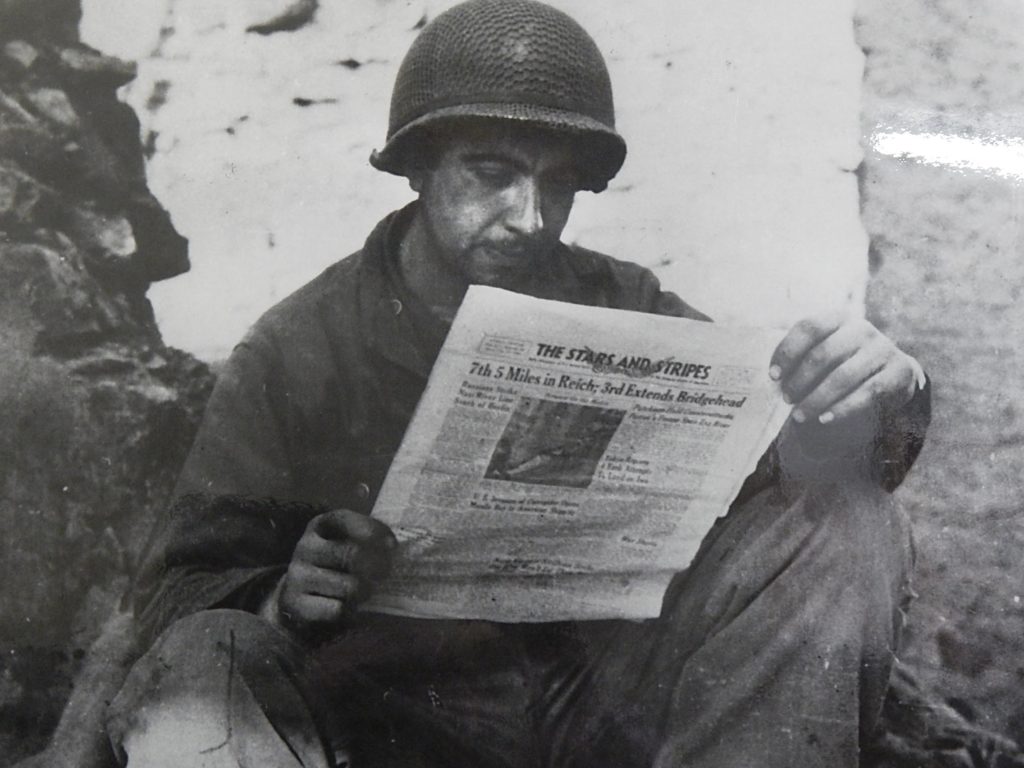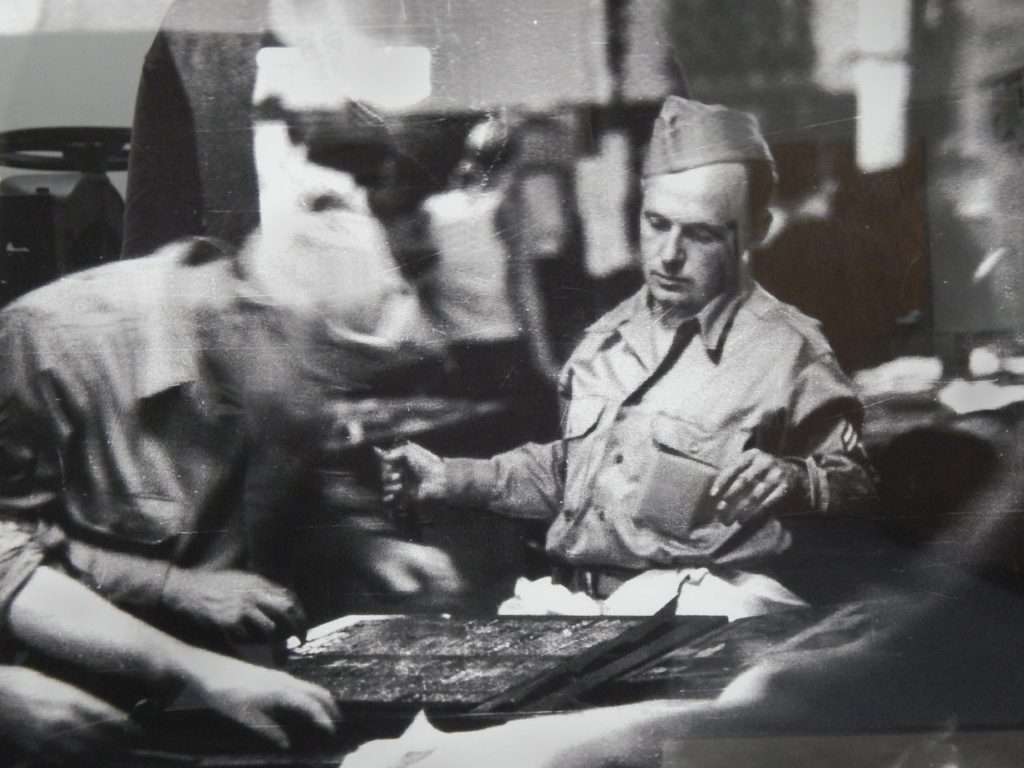After WWI, the Stars and Stripes lay dormant until World War II, when General Dwight D. Eisenhower ordered its restart. Like Pershing, he valued the contribution a newspaper would make to troop morale. During this war, the newspaper was printed in dozens of locations ranging from London to Cairo, and a Pacific edition was created in 1945. Quite simply, the newspaper went where the troops went, finally following them into occupied Germany. Among those who worked for Stripes (as staff members refer to it), perhaps the best-known was Andy Rooney, who later gained fame as the curmudgeonly commentator featured on CBS’ 60 Minutes.
Another famous World War II staffer was Bill Mauldin, who won a Pulitzer Prize for his Stars and Stripes cartoons depicting Willie and Joe, two unshaven and bedraggled infantry soldiers. General George Patton objected to a cartoon that poked fun at his order that troops be clean shaven at all times, even during combat. Patton called Mauldin an “unpatriotic anarchist” and threatened to throw him in jail. General Eisenhower came to Mauldin’s defense because his cartoons provided comic relief for the men and an outlet for their frustrations.
“Stars and Stripes is the soldiers’ paper,” Eisenhower told Patton, “and we won’t interfere.”
After the war, Mauldin worked at the St. Louis Post-Dispatch for several years and won a second Pulitzer Prize in 1959 for a cartoon depicting Soviet author Boris Pasternak in a gulag. In the cartoon, imprisoned Pasternak asks another prisoner, “I won the Nobel Prize for literature. What was your crime?” Mauldin’s postwar Pulitzer at the Post-Dispatch and his later work at the Chicago Sun-Times represent yet another connection between Stars and Stripes and the Missouri-Illinois region.
Written by Brian Brooks, former Stars & Stripes editor, European edition

